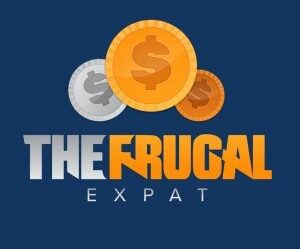SCHD and VOO are two ETFs that have become quite popular in the last Bull Run of the market. VOO is an S&P 500 favorite amongst many investors, and SCHD is a dividend favorite among those investing in dividend growth ETFs.
The question is should you invest in SCHD or VOO? These two ETFs are different, including their makeup, index, growth aspects, dividend, and even history. SCHD vs VOO: Which ETF should you choose?
Let's break down what makes these two popular ETFs different and which is best for your portfolio.
Overview of SCHD vs VOO:
Let's check out the overview of both SCHD and VOO.

SCHD: Schwab U.S. Dividend Equity ETF
SCHD is a growth dividend ETF, an exchange-traded fund, from Charles Schwab that mirrors the Dow Jones Dividend 100 index. It consists of 100 different dividend-paying stocks that have been paying dividends for ten years with a high growth average over the last five years.
With a dividend yield ranging from 3.25%-3.5% over the last ten years, this ETF has become a favorite amongst those looking for dividends. It has also had an average dividend growth of 12% in the previous ten years. As the dividends grow over time, this ETF will become a great source of passive income for those looking for more income in their portfolio.
VOO: Vanguard S&P 500 ETF
VOO is a Vanguard ETF that mirrors the S&P 500 index. It is an ETF derived from the popular VFIAX S&P 500 index fund, which was first created in 1976. So if you are looking for a fund with a long history of how it has grown over 45-plus years, then VOO is a great fund to observe and hold.
It has primarily been prompted by a range of growth stocks over the last ten years, giving it a large following and performance as these growth and tech stocks skyrocket. With the increased concentration of growth stocks, the dividend yield is lower than SCHD. It has a yield of 1.46%. It is excellent for young people looking for more growth in their portfolios. It can be a durable option for those looking to create a 3-fund portfolio.
SCHD vs VOO Differences in the Construction of The ETF
Each fund has a different construction or makeup that will differentiate how an investor may choose one from another. One is more on the growth approach, while the other focuses on dividend growth.
VOO: Large Cap Profitable Approach
VOO is a market cap-weighted ETF, meaning the companies with the higher market cap will have the higher concentration. The profitability of the companies also determines it. The companies must have four consecutive quarters of positive earnings to be in the S&P 500. Unlike an ETF like VTI, VOO is comprised solely of profitable large-cap companies.
A human committee then selects the companies to help make up the index. These companies in the index also include REITs as part of the construction. With the profitability of the companies in the S&P 500, there is more potential for sustained growth of the ETF.
With the growth, there is also a need for more dividends. For dividend investors, there may be better choices than VOO. SCHD has a better approach for those looking for dividend-only ETFs.
SCHD: Dividend-Focused Approach
SCHD, on the other hand, is determined by four factors:
- Dividend history
- Free cash flow to total debt
- Return on equity
- The expected forward yield
These factors help to rank their companies with a computer algorithm; then, the companies will be weighted by market cap.
Their first factor is based on dividend history. If the companies show a dividend growth over the last five years and have a long-standing dividend payment in the previous ten years, then that company will be ranked. The higher the dividend growth of the five years, the higher the ranking.
Free cash flow and return on equity are part of the ranking for the top 100 companies. The more cash flow and higher return on equity a company possess, the more likely the company will be included in the ranking.
SCHD is more about value over the potential of growth. Unlike VOO, SCHD will not include REITs. They will also have companies with little profitability or lag in profits over a long period, like IBM, but IBM will also be in the top holdings due to its high market cap.
Related: 5 Reasons Why SCHD is the Best Dividend Growth ETF
SCHD vs VOO Performances
Since the inception of SCHD, it has performed right around the same as VOO, but as the Covid pandemic hit and the 2022 down market, the value aspect of SCHD has risen, giving it a slight edge over VOO.

In the last ten years, SCHD has had an average growth of 13.13%, while VOO has averaged 13.79% in the same period. That said, as VOO is more concentrated with growth stocks than SCHD, it has a higher chance of outperforming.
Since the interest rates had been so low during the last bull run, many investors plunged their money into dividend-paying stocks that gave out a better dividend rate than the inflation rate. That made SCHD a very valuable ETF. As rates have risen, many investors may opt for safer routes with higher returns rates, like money market funds and CDs (certified deposits).
| Time Period | SCHD | VOO |
|---|---|---|
| YTD | 1.95% | 20.70% |
| 1- Year | 5.38% | 12.97% |
| 3- Years | 15.42% | 13.67% |
| 5- Years | 11.67% | 12.16% |
| 10- Years | 13.13% | 13.79% |
SCHD vs VOO Holdings
Both SCHD and VOO have holdings that are market-weighted cap. VOO's holdings are just the market-weighted companies that fit the S&P 500 criteria. SCHD has four factors that help rank its holdings, and the top 100 make it into the fund, and then they allocate based on market cap. SCHD also caps the holdings at 4% and rebalances every quarter.
You will notice that these holdings are different. SCHD will focus more on income, while VOO will have a more significant concentration of growth companies like Apple and Microsoft.
| Sector | SCHD | VOO |
|---|---|---|
| Information Technology | 21.02% | 25.80% |
| Financials | 20.37% | 11.60% |
| Consumer Staples | 14.01% | 7.20% |
| Health Care | 11.90% | 15.80% |
| Industrials | 11.82% | 8.70% |
| Consumer Discretionary | 6.42% | 9.80% |
| Communication Services | 5.62% | 7.30% |
| Energy | 5.45% | 5.20% |
| Materials | 3.13% | 2.70% |
| Utilities | 0.26% | 3.20% |
| Real Estate | 0.00% | 2.70% |
SCHD Holdings:
The top ten holdings in SCHD make up around 40% of the entire fund. With only 103 stocks in this ETF, the fund is more concentrated. If one stock goes down in value, it could bring the fund down in value, but many of the top 10 having 4% of the concentration can allow SCHD to stay stable.
It comprises mainly value stocks such as Coke-Cola, Lockheed Martin, Verizon, and Home Depot. These companies bring about stability and different sectors of the market.
| Ticker Symbol | Company | Weight |
|---|---|---|
| AVGO | BROADCOM INC | 4.55% |
| VZ | VERIZON COMMUNICATIONS INC | 4.37% |
| TXN | TEXAS INSTRUMENT INC | 4.03% |
| CSCO | CISCO SYSTEMS INC | 4.02% |
| BLK | BLACKROCK INC | 3.98% |
| HD | HOME DEPOT INC | 3.95% |
| MRK | MERCK & CO INC | 3.82% |
| KO | COCA-COLA | 3.80% |
| LMT | LOCKHEED MARTIN CORP | 3.77% |
| PEP | PEPSICO INC | 3.72% |
VOO Holdings:
VOO has a small percentage in their top 10 that takes up most of their fund. Their top ten holding stake up about 28% of the total portfolio. Do not let that number fool you; the top four holdings make up 15.68% of VOO, which is made up of Apple, Microsoft, Amazon, and Berkshire Hathaway. The market cap would have the bottom 200 stocks making up less than 16% of the entire fund.
Having 500 different stocks means there is more diversification than SCHD. As some of the stocks at the bottom of the fund rise in market cap, the entire fund will rise with it. The concentration of the top four companies could also mean there is more volatility as those companies could go up and down.
| Ticker Symbol | Company | Weight |
|---|---|---|
| AAPL | Apple Inc. | 6.02 % |
| MSFT | Microsoft Corp. | 5.54 % |
| AMZN | Amazon.com Inc. | 2.31 % |
| BRK.B | Berkshire Hathaway Inc. Class B | 1.73 % |
| GOOGL | Alphabet Inc. Class A | 1.63 % |
| UNH | Alphabet Inc. Class A | 1.54 % |
| GOOG | Alphabet Inc. Class C | 1.46 % |
| JNJ | Johnson & Johnson | 1.43 % |
| XOM | Exxon Mobil Corp. | 1.41 % |
| JPM | JPMorgan Chase & Co. | 1.22 % |
SCHD vs VOO Dividend Yield
Dividend yield may not be necessary to everyone, but it helps differentiate between the two ETFs.
SCHD's yield of 3.38% per share gives investors an extraordinary dividend. On the other hand, VOO has a dividend of 1.69%, and for those looking for more income from their investments, there may be better funds to own.
Which Should You Choose?
It is hard to choose which ETF will be best for your portfolio. Each one has good qualities that make it a take. For a younger investor having a longer time horizon, it is better to choose an ETF with more growth potential, like VOO. It has a higher concentration of growth companies and the possibility of other profitable companies, which makes it great for those accumulating assets for the long term.
For those investors looking for an ETF with solid valued companies focusing on growing dividends for the long term, then SCHD may be the ETF for you. It brings passive income through dividends and creates a solid fund without the ups and downs of the market.
Related Articles:
- SPY vs VOO: Which S&P 500 ETF is the Better Buy?
- VGT vs QQQ: Which is The Best Tech ETF?
- SCHD vs VYM: Which is the Better Dividend ETF?

M1 Finance
For beginners, M1 Finance offers a great platform to start investing and grow your money.

I’m Steve. I’m an English Teacher, traveler, and an avid outdoorsman. If you’d like to comment, ask a question, or simply say hi, leave me a message here, on Twitter (@thefrugalexpat1). Many of my posts have been written to help those in their journey to financial independence. I am on my journey, and as I learn more I hope to share more. And as always, thanks for reading The Frugal Expat.







